I’m excited to share with you everything about one of the most vibrant and dynamic dog breeds out there — the Australian Shepherd. Now, here’s a fun fact to kick things off: despite their name, Australian Shepherds didn’t actually originate in Australia! Surprising, right? They were developed in the United States, primarily for herding livestock.
I’ve always been fascinated by the unique traits and rich history of different dog breeds, and the Australian Shepherd is no exception. From their eye-catching coat colors and patterns to their remarkable intelligence and energy, these dogs are truly one-of-a-kind. In this post, we’ll dive into the world of Australian Shepherds, exploring their physical characteristics, temperament, and much more.
TABLE OF CONTENTS
- Australian Shepherd Quick Summary
- Physical Characteristics of the Australian Shepherd
- Australian Shepherd Origins
- Australian Shepherd Personality and Temperament
- Australian Shepherd Mixes
- Living with an Australian Shepherd
- Taking Care of an Australian Shepherd Dog
- Health Issues Specific to Australian Shepherds
- Adoption and Buying Tips
- Should You Get an Australian Shepherd?
- FAQs on Aussies
- Beyond the Herding Instinct
Australian Shepherd Quick Summary
Physical Characteristics of the Australian Shepherd
Australian Shepherds are not only beloved for their intelligence and energy, but they are also renowned for their distinct and striking physical features. From their size to the unique colors of their coats and eyes, each aspect of their appearance contributes to their overall charm and effectiveness as both working dogs and companions. Let’s delve into the key physical characteristics that define this beautiful breed.
Height and Weight
Australian Shepherds fall into the medium size category, perfectly blending strength with agility. Males typically stand between 20 to 23 inches at the shoulder, while females range from 18 to 21 inches. In terms of weight, males usually weigh around 50 to 65 pounds, and females are generally between 40 to 55 pounds. This size range gives them the robustness needed for various activities while maintaining their characteristic agility. However, there’s also a smaller variant known as Mini Australian Shepherds, which are bred selectively to be even more compact. Mini Aussies typically stand between 13 to 18 inches at the shoulder and weigh between 20 to 40 pounds.
Face
The face of an Australian Shepherd is often what captures the heart first. I think their eyes are particularly expressive and can range in color from blue and brown to amber. It’s not uncommon for Aussies to have heterochromia, where each eye is a different color, adding to their unique appeal. Their medium-sized ears set high on the head, folding over slightly at the tips, complement their alert and intelligent expression.
Coat
As someone who has spent countless hours grooming and admiring these magnificent dogs, I can attest to the unique beauty of an Australian Shepherd’s coat. It’s moderately long and thick, perfectly suited to protect them from the elements. Whether straight or slightly wavy, their coat covers them well and calls for regular grooming. From my experience, this grooming time is not just about maintaining their stunning looks, but it’s also a wonderful opportunity to bond with your Aussie.
Coat Colors
I’ve been continuously amazed by the variety of coat colors in Australian Shepherds. The palette ranges from blue merle and black to red merle and all shades of red. Many of these beautiful dogs also have white markings or tan points, which may be found on their face, chest, legs, and under the tail. Each Aussie I’ve met has had a unique pattern, making each one a distinct individual. This diversity in color is not only visually striking but also a testament to the breed’s unique charm and appeal.
From Adobe Stock
The most common Australian shepherd coat colors are:
- Solid black
- Black and white
- Black, white, and tan
- Solid red
- Red and white
- Blue merle (with bicolor and tri-color variations)
- Red merle (with bicolor and tri-color variations)
Solid white and yellow are the more uncommon Australian shepherd colorings.
Australian Shepherd Origins
From Adobe Stock
The origins of the Australian Shepherd, often affectionately called an “Aussie,” are as interesting as the breed itself. Contrary to what the name suggests, the breed did not originate in Australia, but rather in the United States. This surprising fact often catches many dog enthusiasts off guard.
Development in the United States
The Australian Shepherd was developed in the United States in the 19th century. Despite its name, the breed’s lineage is thought to have ties to dogs that were originally brought to the U.S. from Europe via Australia. Ranchers in the American West admired the dogs for their herding abilities and stamina, and thus began the breed’s development. The breed was shaped by the demands of the American ranching culture, especially in the western states.
Influence of Basque Shepherds
A key part of the Australian Shepherd’s history involves Basque shepherds, who migrated from Spain to Australia and later to the United States, bringing with them their herding dogs. These dogs, bred with other herding breeds and collies, played a significant role in the development of the modern Australian Shepherd.
Rise in Popularity
The Australian Shepherd gained popularity in the mid-20th century, thanks to their frequent appearances in rodeos, horse shows, movies, and television shows. Their agility, intelligence, and striking appearance caught the public’s eye. Over time, the breed not only became a favorite among ranchers and farmers but also among families and dog enthusiasts seeking a loyal and active companion.
Modern Recognition
Today, the Australian Shepherd is recognized by major kennel clubs and is celebrated for its versatility as a working dog and a family pet. The breed’s ability to excel in various roles, from herding livestock to participating in search and rescue missions, makes them a testament to their rich and diverse heritage.
In understanding the origins of the Australian Shepherd, we gain a deeper appreciation for their adaptability, intelligence, and the hardworking nature that makes them so unique. This background sets the stage for understanding their physical and temperamental traits, which are deeply rooted in their historical development.
Australian Shepherd Personality and Temperament
From Adobe Stock
The Australian Shepherd is not just a pretty face; their temperament and personality are what truly make them stand out as a breed. Known for their intelligence, energy, and loyalty, these dogs are more than just pets; they become integral members of the family.
Intelligence and Trainability
Australian Shepherds are incredibly smart, which is a trait I’ve seen time and again in my own Aussie, Nala. This intelligence makes them highly trainable, but it also means they need mental stimulation to stay happy. They excel in obedience, agility, and other dog sports, reflecting their sharp minds and eagerness to learn.
Energy and Playfulness
Aussies are high-energy dogs, a characteristic I’ve experienced firsthand with my energetic Nala. They love to play and need plenty of exercise. Without adequate physical activity, they can become bored and develop destructive behaviors. As an active person myself, I find their energy levels perfectly complement an active lifestyle.
Loyalty and Affection
One of the most endearing qualities of Australian Shepherds is their loyalty. They form strong bonds with their families and are known to be particularly affectionate. My Nala has been a loyal companion, always staying close and showing immense love and affection. This loyalty, however, also means they can be protective of their family, a trait that should be managed with proper socialization and training.
Socialization and Behavior with Others
Early socialization is crucial for Australian Shepherds. Exposure to different people, animals, and environments helps them become well-rounded dogs. Aussies are generally good with children and other pets, especially when raised with them. However, their herding instinct may kick in, and they might try to herd children or smaller animals, a behavior that’s both amusing and something to be aware of.
Australian Shepherd Mixes
Australian Shepherds, with their distinctive looks and admirable traits, are not just popular as purebreds but also highly sought after in mixed breed combinations. These mixes often inherit the Aussie’s intelligence, energy, and loyalty, blended with the characteristics of the other breed involved. Here’s a look into the intriguing world of Australian Shepherd mixes.
Some popular Australian Shepherd mixes include:
- Aussie-Collie: A mix between an Aussie and a Border Collie, known for exceptional intelligence and herding ability.
- Aussiedoodle: A cross with a Poodle, often admired for their hypoallergenic coat and sharp intellect.
- Lab Aussie: Combining an Aussie with a Labrador Retriever, these mixes are friendly, energetic, and great family pets.
- German Aussie: A mix with a German Shepherd, bringing together the protective nature of the German Shepherd with the Aussie’s herding instincts.
Living with an Australian Shepherd
Living with an Australian Shepherd is an adventure filled with energy, affection, and commitment. As someone who shares his life with an Aussie, I can vouch for the fact that they make fantastic companions, but they do require specific considerations to thrive.
Daily Routine
Australian Shepherds thrive on routine. Regular feeding times, exercise, and training sessions help them understand what to expect each day, which in turn keeps them balanced and content. Nala, my Aussie, knows her schedule well – from morning walks to evening playtime. This consistency helps in managing her energy levels and keeps her well-behaved.
Indoor Living
While Australian Shepherds are active, they can adapt to indoor living as long as their exercise needs are met. They enjoy being close to their family and can be quite cuddly and affectionate. It’s essential to provide them with toys and activities that keep them engaged while indoors. Puzzle toys and chew toys are great for keeping them entertained.
Compatibility with Families and Other Pets
Aussies generally do well with families and other pets, especially if they have been raised together. They are known to be good with children, often protective and gentle. However, their herding instinct might kick in, so it’s important to supervise interactions with young children and teach the dog appropriate behavior.
Taking Care of an Australian Shepherd Dog
Feeding
Proper nutrition is fundamental to the health and well-being of an Australian Shepherd. As a dog owner and enthusiast, I’ve learned that feeding your Australian Shepherd the right diet can make a significant difference in their overall health and energy levels. Here’s a guide based on my experience with Nala and general best practices for feeding Australian Shepherds.
Understanding Nutritional Needs
Australian Shepherds are active dogs, and their diet should support their energy requirements. High-quality dog food with a good balance of protein, fats, carbohydrates, vitamins, and minerals is ideal. Protein is particularly important for muscle maintenance, especially for a breed as active as the Aussie. Remember, the dietary needs of your Aussie may vary depending on their age, activity level, and health status.
Feeding Schedule
I’ve found that a regular feeding schedule helps in maintaining a healthy digestive system. For adult Australian Shepherds, two meals a day is typically recommended. Puppies, however, may require more frequent feedings, usually three to four times a day. It’s important to avoid free feeding (leaving food out all the time), as it can lead to overeating and weight gain.
From Adobe Stock
Portion Control
Portion control is crucial to prevent obesity, a common problem in dogs that can lead to various health issues. The amount of food an Aussie needs depends on their size, age, and activity level. Always refer to the feeding guidelines on the dog food package and consult with your veterinarian to determine the appropriate portion size for your dog.
Treats and Snacks
While treats can be a helpful training aid, they should be given in moderation. Treats and snacks should not make up more than 10% of your dog’s daily caloric intake. I choose healthy treat options for Nala, like small pieces of lean meats or vegetables.
Special Dietary Considerations
Some Australian Shepherds may have specific dietary needs or sensitivities. Food allergies or sensitivities are not uncommon, and symptoms can include itchy skin, digestive problems, and ear infections. If you suspect your Aussie has a food allergy, consult your vet for an appropriate diet plan.
Fresh Water
Access to fresh, clean water is essential at all times. Keeping your Aussie well-hydrated is as important as their solid diet, especially after exercise and during hot weather.
Grooming
Proper grooming is an essential aspect of caring for an Australian Shepherd. Their beautiful coats and active nature mean they need regular grooming to stay clean, healthy, and comfortable. Based on my experiences with Nala, here are some key grooming practices for Australian Shepherds.
Coat Care
Australian Shepherds have a double coat with a longer outer coat and a soft undercoat. They shed moderately throughout the year and heavily during the shedding season. Regular brushing, at least once a week, is crucial to remove loose fur and prevent matting. During shedding season, more frequent brushing may be needed. I use a slicker brush and an undercoat rake for Nala, which works wonders in keeping her coat smooth and tangle-free.
Bathing
While Aussies don’t require frequent baths, they should be bathed when necessary, like after a muddy play session. I bathe Nala every few months or when she gets particularly dirty. It’s important to use a dog-specific shampoo that doesn’t strip their coat of natural oils.
Nail Care
Regular nail trimming is important to prevent discomfort and potential health problems. If you can hear their nails clicking on the floor, it’s time for a trim. I usually trim Nala’s nails every month or so, but this can vary depending on how quickly your dog’s nails grow and their activity level.
Ear Care
Australian Shepherds’ ears should be checked regularly for signs of infection, mites, or buildup of debris. Cleaning their ears as part of their grooming routine helps prevent ear infections. I use a vet-recommended ear cleaning solution and cotton balls for Nala.
Dental Hygiene
Good dental health is crucial for any dog. Regular brushing of teeth or use of dental chews helps in keeping an Aussie’s teeth clean and preventing dental diseases. I brush Nala’s teeth several times a week, which she’s grown to tolerate quite well.
Incorporating these grooming practices into your routine with your Australian Shepherd not only keeps them looking and feeling their best but also provides an opportunity for bonding. Regular grooming sessions are a great time to inspect your dog for any bumps, parasites, or other issues that may require veterinary attention. Plus, it’s a relaxing and enjoyable experience for both the dog and the owner.
Training and Exercise
Australian shepherds are smart, alert, loyal, and easy to train. This breed responds best to positive reinforcement with praise, food, and play used as rewards. The dogs aren’t usually stubborn and are happy to take commands from their trainers.
Begin training an Australian shepherd puppy when it’s seven weeks old. Begin by toilet-training, leash-training, and practicing basic commands like “sit” and “heel.” Also start to socialize the puppy in various environments. Puppies learn best when they are exposed to different social situations between the ages of seven weeks and four months old.
Training Essentials
Australian Shepherds thrive on training. They are eager learners and respond well to positive reinforcement techniques. I’ve found that consistency, patience, and a variety of training exercises keep them engaged and happy. Since Aussies are smart, they pick up on commands quickly, but they also need to be challenged to prevent boredom. Advanced training classes, agility sports, and obedience competitions can be excellent ways to engage their minds.
Exercise Needs
Australian Shepherds have a high energy level, and they need ample exercise to stay physically and mentally healthy. A simple walk around the block won’t suffice for this breed. They need more vigorous activities like running, hiking, or playing fetch. I spend a lot of time outdoors with Nala, and she loves every minute of it. It’s not just about physical activity; these exercise sessions are also perfect opportunities for bonding and training.
From Adobe Stock
Mental Stimulation
Mental stimulation is just as important as physical exercise for an Australian Shepherd. Puzzle toys, hide-and-seek games, and trick training are great ways to keep their minds sharp. Nala loves interactive play sessions that challenge her intellectually. This mental engagement prevents destructive behaviors that can stem from boredom and unspent energy.
Socialization and Behavioral Training
Early socialization and behavioral training are crucial for Australian Shepherds. Exposing them to various environments, people, and other animals helps them develop into well-adjusted adults. It’s important to remember that their herding instinct can lead them to try and herd children and other pets. Training them to understand commands like ‘stop’ or ‘leave it’ is essential in managing this behavior.
Health Issues Specific to Australian Shepherds
While Australian Shepherds are generally a healthy breed, like all dogs, they are prone to certain health issues. Being aware of these potential problems is crucial for any Aussie owner. In my time working with and caring for Australian Shepherds, I’ve come to understand the importance of being vigilant about their health. Here are some of the common health issues to be aware of:
Progressive Retinal Atrophy (PRA)
PRA is a genetically inherited disorder that affects the eyes, leading to a gradual loss of sight. In the early stages, dogs with PRA may have eyes that look cloudy or gray. Symptoms include nervousness in low-light conditions and clumsiness in unfamiliar settings. Sadly, there’s no cure for PRA, and it typically progresses over one to two years. Regular eye exams are important for early detection.
Epilepsy
Epilepsy is a neurological condition causing repeated seizures. While these seizures are not painful, they can be distressing, causing confusion and panic in affected dogs. Managing epilepsy involves lifelong anticonvulsant medication. Though it can’t be cured, with proper care, dogs with epilepsy can lead relatively normal lives.
Hip and Elbow Dysplasia
Hip and elbow dysplasia are inherited conditions affecting the joints. Dogs suffering from these conditions may show signs of pain or lameness in their legs, have a reduced range of motion, and may hesitate to run, jump, or climb stairs. Treatment options include weight management, exercise therapy, and in severe cases, surgery. Early detection through regular vet check-ups can help in managing these conditions effectively.
Deafness
Deafness, particularly in dogs with white and merle coat colors, is another health concern. It can affect the dog’s ability to respond to sounds and, in most cases, can’t be cured. While some treatments are available, they are not universally effective. Therefore, understanding and adapting to a deaf dog’s needs is crucial for their well-being.
The key to a healthy Australian Shepherd is responsible breeding. Prospective owners should seek breeders who have screened parent dogs for these common health concerns. Regular veterinary check-ups, a healthy lifestyle, and being attentive to your dog’s behavior and physical condition are also vital in ensuring your Aussie lives a long, happy life.
Adoption and Buying Tips
Choosing to bring an Australian Shepherd into your home is a big decision, and it’s important to do so responsibly. Whether you’re looking to adopt or buy, there are several factors to consider to ensure you’re getting a healthy, well-adjusted dog. Based on my experience and knowledge in the dog world, here are some tips for adopting or buying an Australian Shepherd.
Choosing a Reputable Breeder
If you’re buying a puppy, it’s crucial to find a reputable breeder. A good breeder will:
- Provide health clearances for the puppy’s parents, proving they’ve been tested for common health issues.
- Allow you to visit and meet the puppy’s parents and see the conditions they are raised in.
- Ask you questions to ensure you’re a good fit for their puppy.
- Offer guidance on caring for your Aussie and be available for questions even after you take your puppy home.
Avoid puppy mills and pet stores, as they often don’t follow ethical breeding practices and don’t consider the health and well-being of the puppies.
Considering Adoption
Adoption is a great option for those looking to give an Australian Shepherd a second chance. Rescue Aussies can make wonderful pets. When adopting:
- Visit local shelters or look for breed-specific rescues.
- Spend time with the dog to assess its temperament and energy levels.
- Ask about the dog’s history, health, and any behavioral issues.
- Be prepared for a potential adjustment period, especially if the dog has had a difficult past.
Questions to Ask
Whether adopting or buying, here are some important questions to ask:
- What is the dog’s health history?
- Have any genetic tests been done?
- What is the dog’s temperament like?
- How has the dog been socialized and trained?
- Is there a return policy if things don’t work out?
Preparing for Your New Dog
Before bringing your Australian Shepherd home, ensure you’re prepared:
- Have the necessary supplies like food, a bed, toys, grooming tools, and a crate.
- Find a good veterinarian and schedule a check-up shortly after bringing your dog home.
- Be ready to invest time in training and socialization.
Remember, whether you adopt or buy, bringing a dog into your life is a long-term commitment. Australian Shepherds are a wonderful breed, but they require time, energy, and dedication. Doing your homework beforehand will help ensure a happy life with your new furry friend.
From Adobe Stock
Should You Get an Australian Shepherd?
Australian shepherds are loyal, lively dogs that are loving companions for most families, but these dogs are not suitable for some people or lifestyles.
Australian Shepherds are Suitable for:
Australian shepherds have a lot of energy, so they’re ideally suited for active, outdoorsy people. Ideal owners should have plenty of time to walk and play with their dog throughout the day. Due to this breed’s high energy level, the dogs do best in homes with backyards or good access to parks for off-leash walks.
Australian shepherds are friendly, nurturing, and love to have fun, so they’re ideal pets for families with confident, sensible children.
Australian Shepherds are NOT Suitable for:
Australian shepherds are herding dogs, so they’re known to herd, nip, and chase children and other pets. Although these dogs eventually learn that children and pets are not part of their “flock,” the dogs shouldn’t be housed with nervous children or pets.
This breed thrives off of mental stimulation and training. People who don’t have the time or patience to train and play with their dogs shouldn’t buy an Australian Shepherd.
From Adobe Stock
FAQs on Aussies
How Much Is an Australian Shepherd?
An Australian shepherd costs $650 to $850 — that’s a mid-range dog. The price of the dog depends on factors including age, coat color, breeder reputation, and whether the dog is bought from a breeder or adopted. Adopting an Australian shepherd costs about $200.
Blue and red merle dogs, tri-color dogs, or dogs with unique coloring are more expensive than block-color or mostly-black dogs. Puppies are also more expensive than adults.
How Much Does it Cost to Raise an Australian Shepherd?
The average monthly cost of raising an Australian shepherd is $80 after the initial purchase and set-up costs. Set-up costs include food, medication and vet bills, grooming supplies, and new toys. Additional costs may include dog walking and dog sitting services, professional grooming, and dog boarding.
Are Australian Shepherds good for first-time dog owners?
Australian Shepherds can be a challenge for first-time dog owners due to their high energy levels and need for constant mental stimulation and exercise. However, with proper research, commitment to training, and an active lifestyle, a first-time owner can successfully raise a happy and well-adjusted Aussie.
Do Australian Shepherds bark a lot?
Australian Shepherds can be vocal, especially if they are bored or not getting enough exercise. Proper training and ensuring they have enough physical and mental stimulation can help manage excessive barking.
Can Australian Shepherds live in apartments?
While Australian Shepherds are best suited to homes with yards, they can adapt to apartment living if their exercise and mental stimulation needs are adequately met. It’s important for apartment dwellers to commit to daily, vigorous exercise and regular outdoor activities.
How do Australian Shepherds handle cold or hot weather?
Australian Shepherds have a double coat that provides some protection against the elements. They generally handle cold weather well, but it’s important to monitor them and provide extra warmth in extreme conditions. In hot weather, ensure they have shade, water, and avoid excessive exercise during the hottest parts of the day.
Here are more FAQs:
- What is a Blue Merle Australian Shepherd?
- How Much Should an Australian Shepherd Eat?
- What is the Lifespan of an Australian Shepherd?
- How Big is an Australian Shepherd?
- How Much Does an Australian Shepherd Cost?
- Are Australian Shepherds High-maintenance Dogs?
- Are Australian Shepherds Intelligent?
- How Far can I Walk my Australian Shepherd Puppy?
- Do Australian Shepherds Like to Cuddle?
- Can Australian shepherds be Left Alone?
- Do Australian Shepherds Bark a Lot?
- Do Australian Shepherds Shed a Lot?
- Is an Australian Shepherd a Good Family Dog?
Beyond the Herding Instinct
Diving into the world of Australian Shepherds has shown us what incredibly vibrant and dynamic companions they can be. Their intelligence, energy, and devotion set them apart as both family pets and working dogs. However, it’s crucial to acknowledge that Aussies are not a breed for everyone. They demand considerable commitment in terms of time, energy, and consistent training.
Through my experiences fostering an Aussie and interacting with many others, I’ve seen firsthand the immense joy and activity they bring into a home. If you’re prepared for the responsibilities, an Australian Shepherd can be a magnificent addition to your life, offering a unique blend of adventure, companionship, and affection.
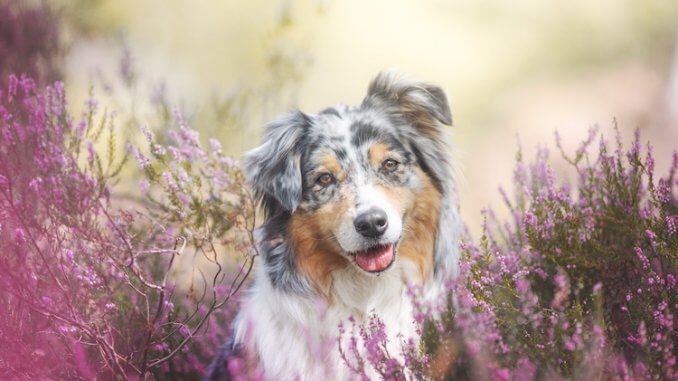
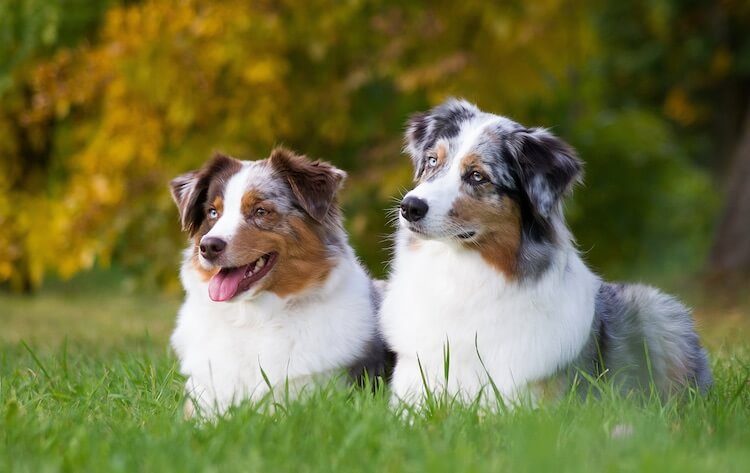

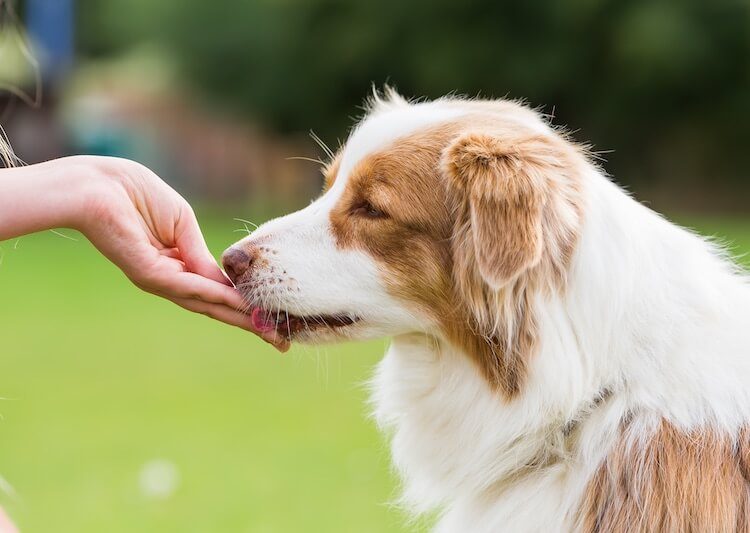
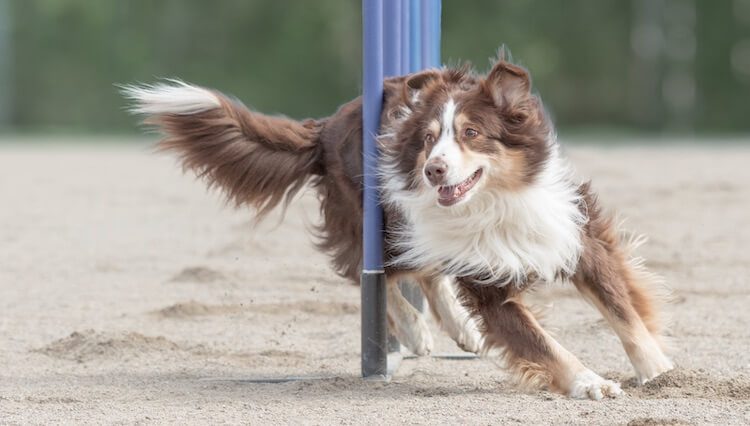

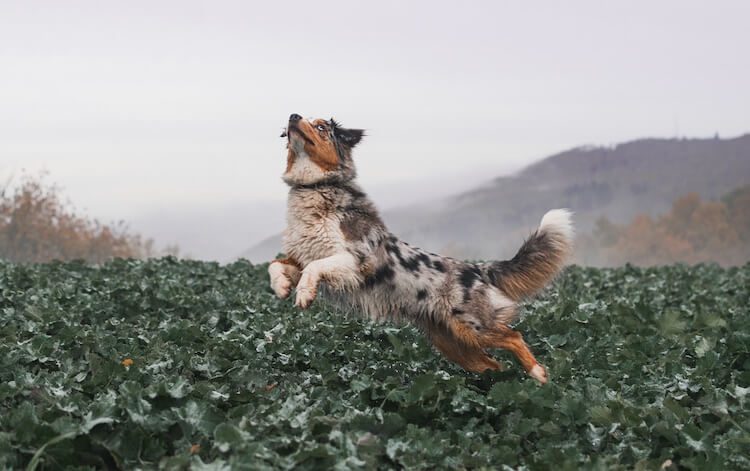



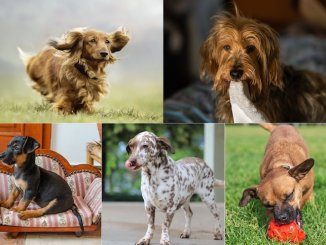
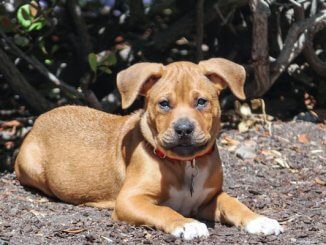
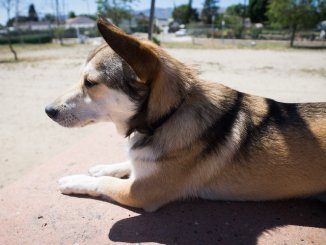
I enjoy your book and I am impressed with the Australian Shepard. Thank you
We have a mini Aussie and love her! A big plus is our Manx cats actually like her. While she does try to heard them when outside! Thank you for your information on them.